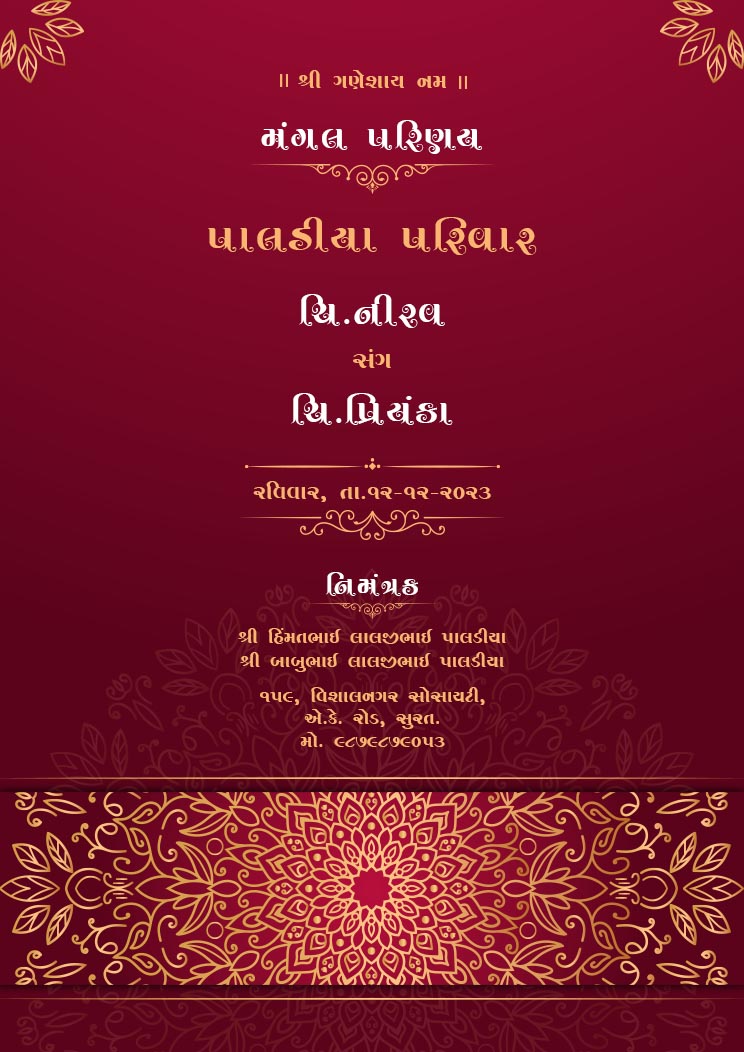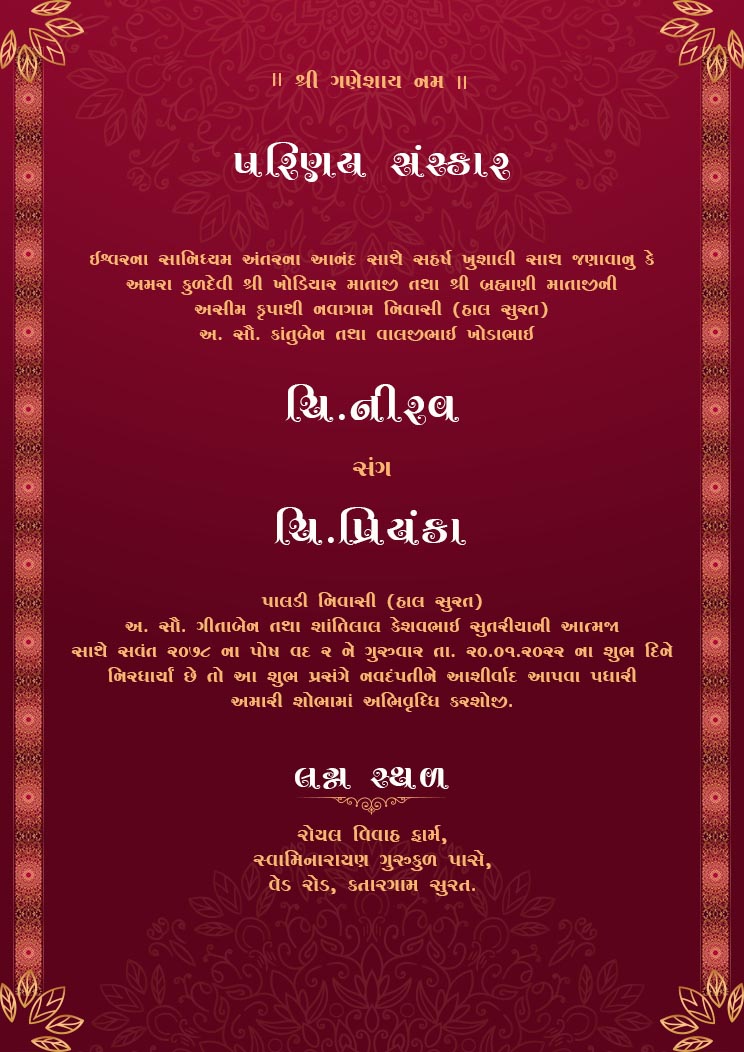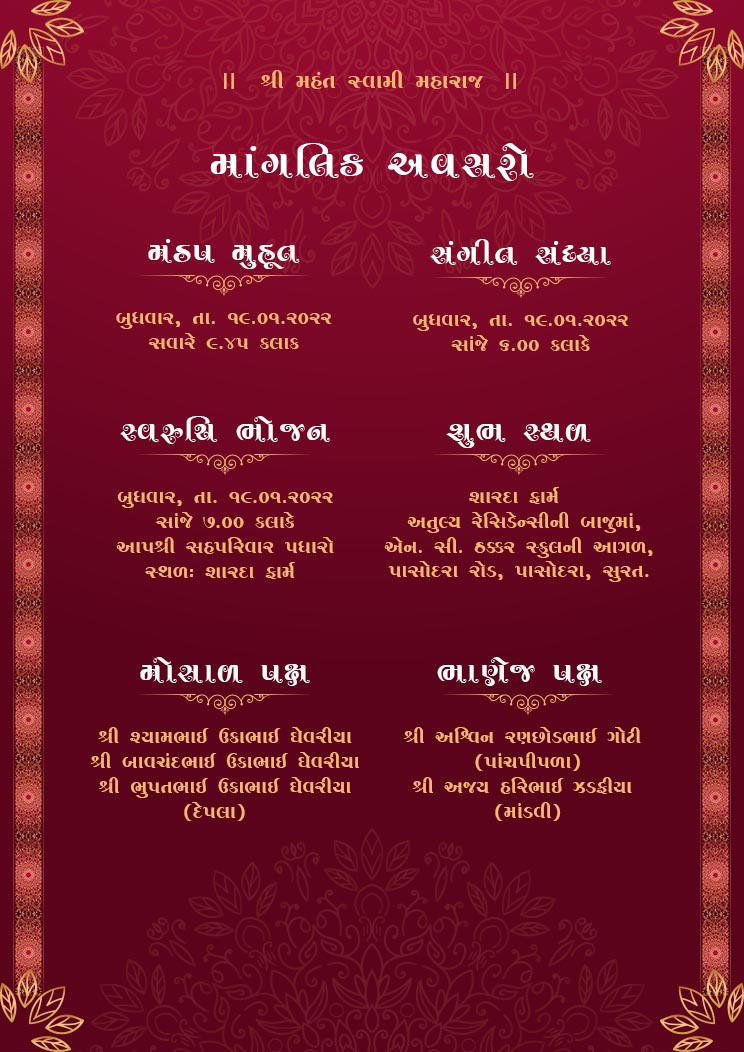The term "Kankotri Tahuko" originates from two Gujarati words: "Kankotri," meaning invitation card, and "Tahuko," which refers to a specific style of conveying information. Together, they signify more than just a piece of paper inviting guests to a wedding; they encapsulate the essence of familial ties and community celebration.

At its core, the Kankotri Tahuko serves multiple purposes beyond its practical use. It acts as a cultural ambassador, communicating not just the details of the event but also the values, traditions, and social standing of the families involved. Each Kankotri Tahuko is meticulously designed, often featuring intricate artwork, vibrant colors, and ornate patterns that reflect the rich cultural heritage of Gujarat.
Traditionally, the process of creating a Kankotri Tahuko is a collaborative effort involving family members, artisans, and calligraphers. The design itself is laden with symbolism, with motifs such as peacocks, lotuses, and traditional patterns like bandhani (tie-dye) or rangoli (colored sand art) adorning the card. These symbols carry deep cultural significance, representing prosperity, fertility, and auspicious beginnings.

Beyond aesthetics, the language used in a Kankotri Tahuko is equally important. Typically, invitations are written in Gujarati, adorned with poetic verses or shlokas (religious verses) that bless the couple and invoke blessings from deities. The choice of words and the style of writing reflect the family's preferences and cultural background, adding a personalized touch to each invitation.
Furthermore, the format of a Kankotri Tahuko adheres to traditional norms. It often includes not just the basic details of the wedding—such as date, time, and venue—but also the names of the bride and groom, their parents, and sometimes even their extended family members. This inclusivity underscores the importance of familial ties and community involvement in Gujarati weddings.
In modern times, while the essence of the Kankotri Tahuko remains intact, there have been subtle shifts in its presentation and distribution. Digital advancements have made it possible to create virtual Kankotris or e-invitations, yet many families still prefer the tangible elegance of a physical Kankotri Tahuko. These cards are often cherished as keepsakes, serving as reminders of joyous occasions and familial bonds for years to come.

Moreover, the exchange of Kankotri Tahukos extends beyond the mere act of invitation. It symbolizes the initiation of a new chapter in the lives of the couple and their families, marking the beginning of wedding festivities that may span days of ceremonies, rituals, and cultural celebrations.
In conclusion, the Kankotri Tahuko stands as a testament to the enduring cultural heritage of Gujarat, where tradition meets artistry in the form of a wedding invitation. It not only announces an upcoming union but also preserves and perpetuates centuries-old customs, making each card not just an invitation but a cherished artifact embodying the essence of Gujarati weddings—a celebration of love, unity, and cultural richness.